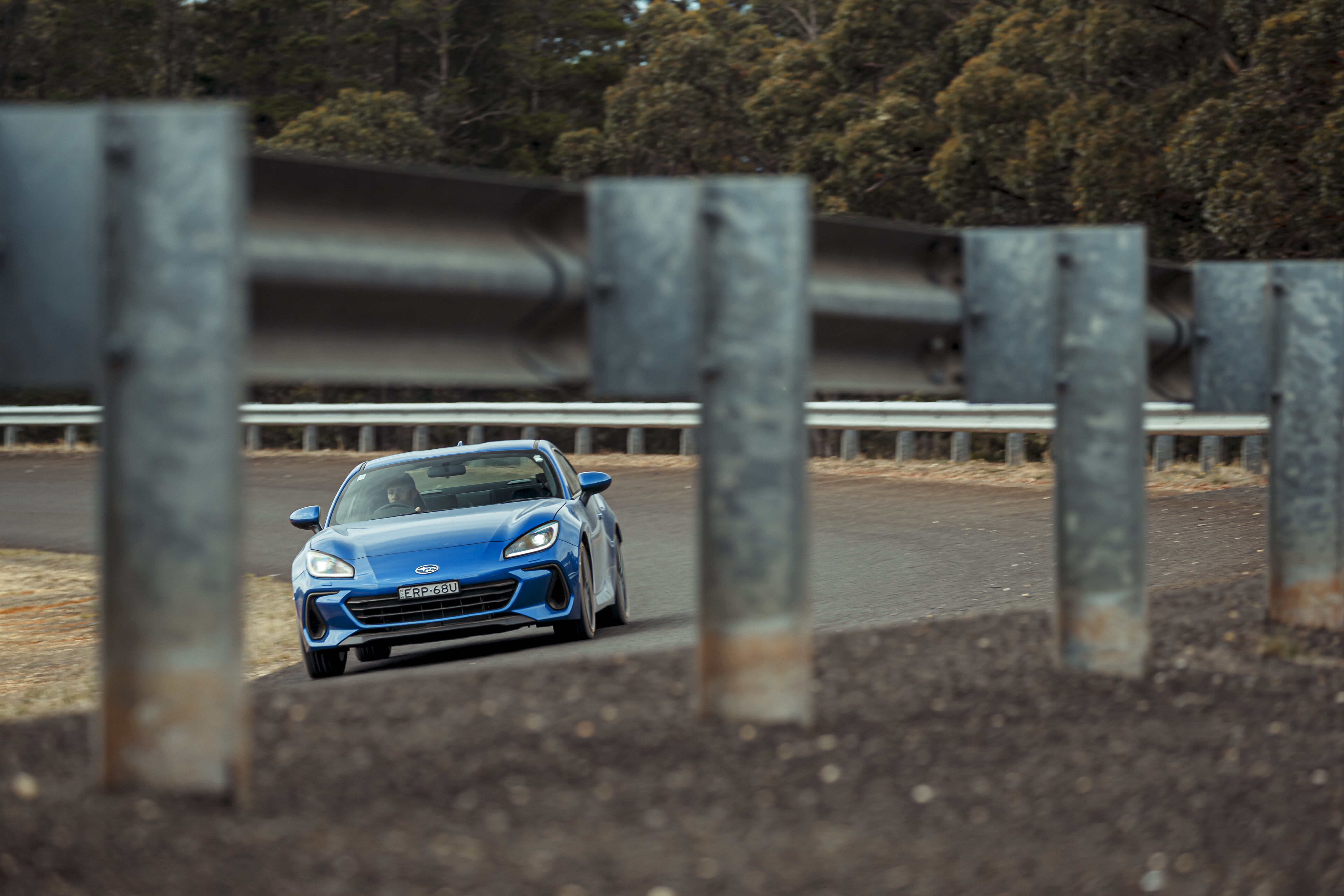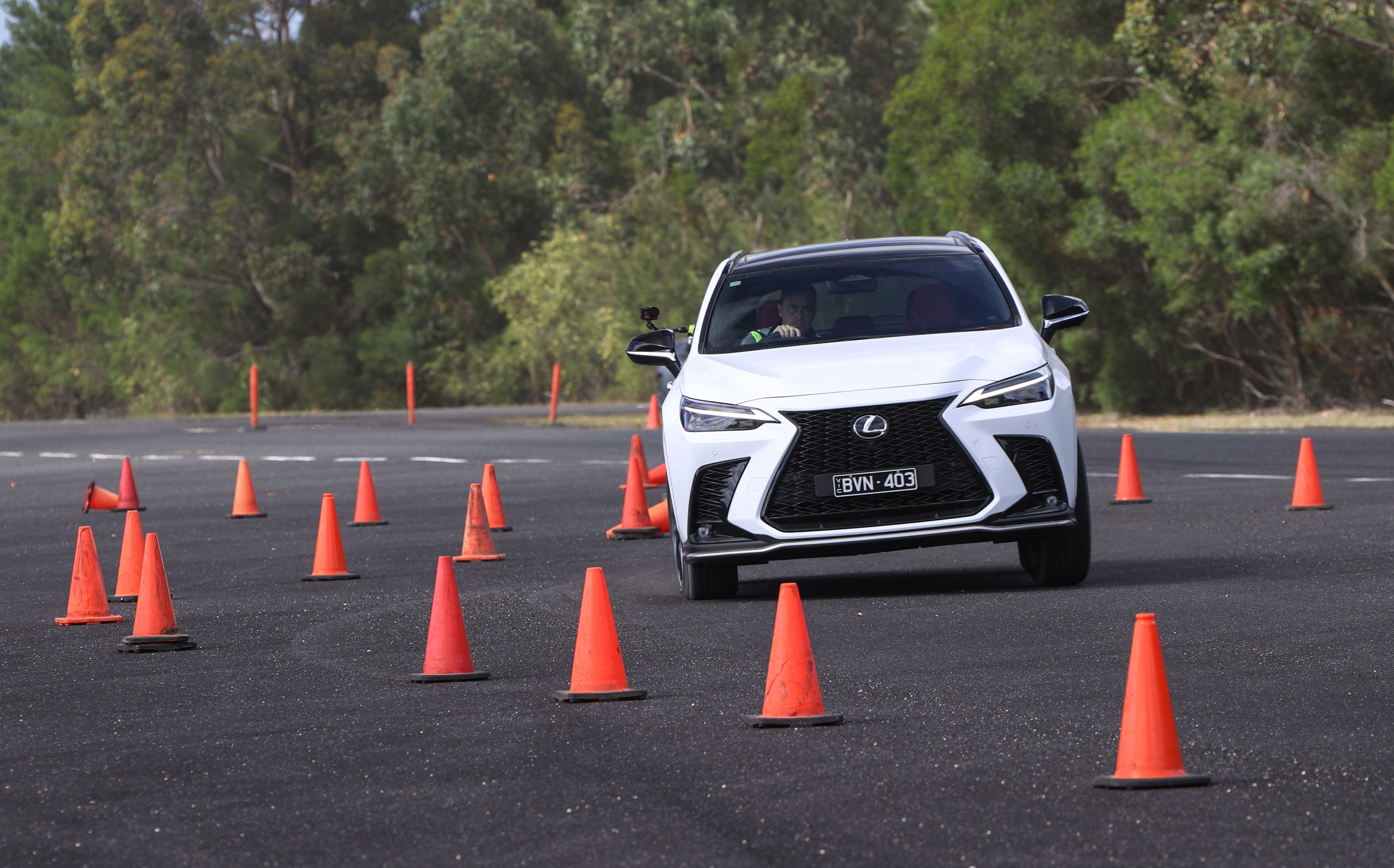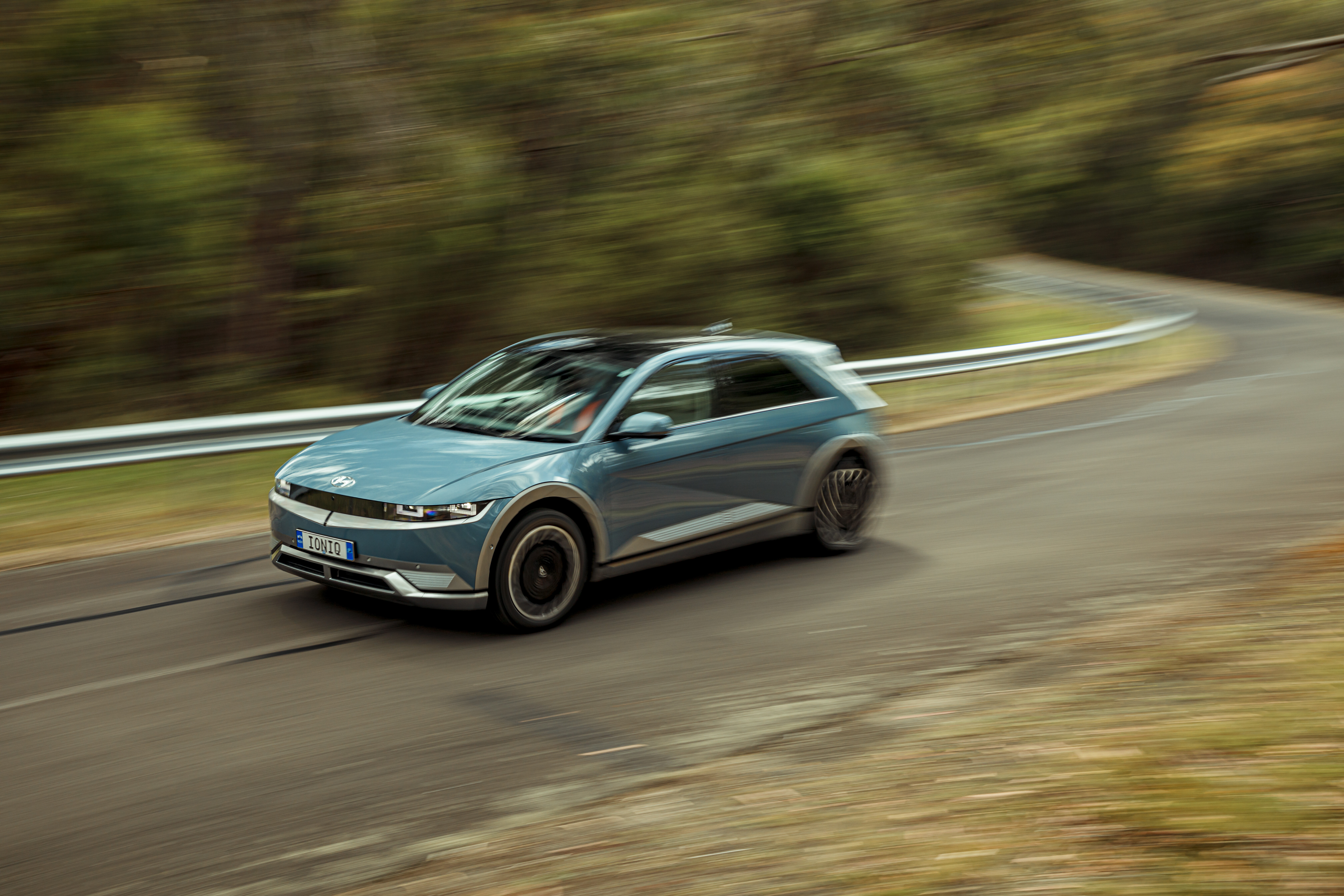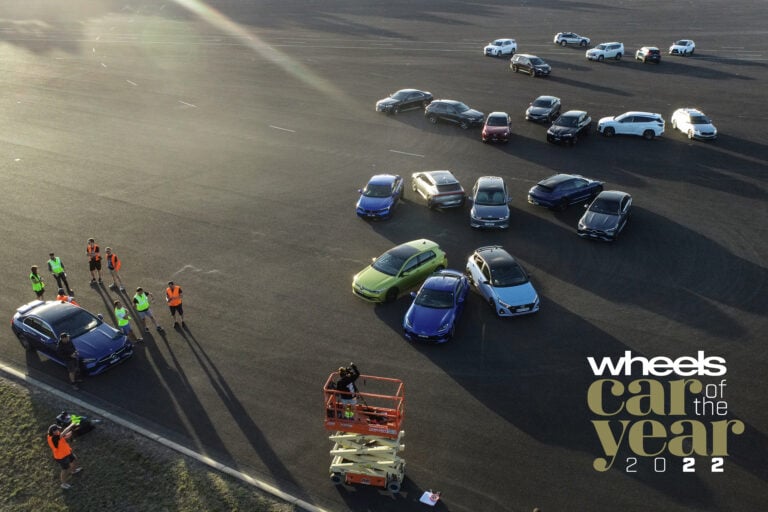Wheels once again heads to the Australian Automotive Research Centre to conduct COTY away from prying eyes, which means access to a broad range of surfaces and environments in which to test some of the best cars on sale in Australia. Without further ado, here’s how we do it.
1. Dirt handling/braking
With a surface compromising hard-packed loam with a top layer of loose, fine gravel, the AARC’s dirt circuit is revealing of the ESC and ABS systems, on-off throttle response, and overall stability.
2. Coarse-chip motorway
Outer loop of the AARC allows assessment of high-speed stability, wind and road noise, while later negotiating a long sweeping right hander tells plenty about steering feel and high-speed turn-in confidence.

3. Swerve & recover
Entered at 80km/h, so every car is faced with the same challenge of swerving hard right to avoid the theoretic obstacle (errant child, kangaroo; probably not a moose) before an immediate, hard return left into the original lane of travel.
4. Dry braking
Also entered at 100km/h. At the entry cone, we stomp the brake pedal hard, and allow the ABS to determine the stopping distance.

5. Rough-road corrugations
A 200m section of brutal bluestone, followed by the same distance of cobblestones. Taken at 40km/h to test not just suspension comfort and impact absorption, but also the integrity of interior fittings and trim.
6. Dynamic assessment
A 2.2km B-road that begins with a twisting descent of between five and 10 percent, before plateauing at a hairpin and beginning a fast, jinking climb punctuated by a couple of big braking points leading into tightening radius corners. Plenty of armco and trees to hit, so demands real-world caution.








